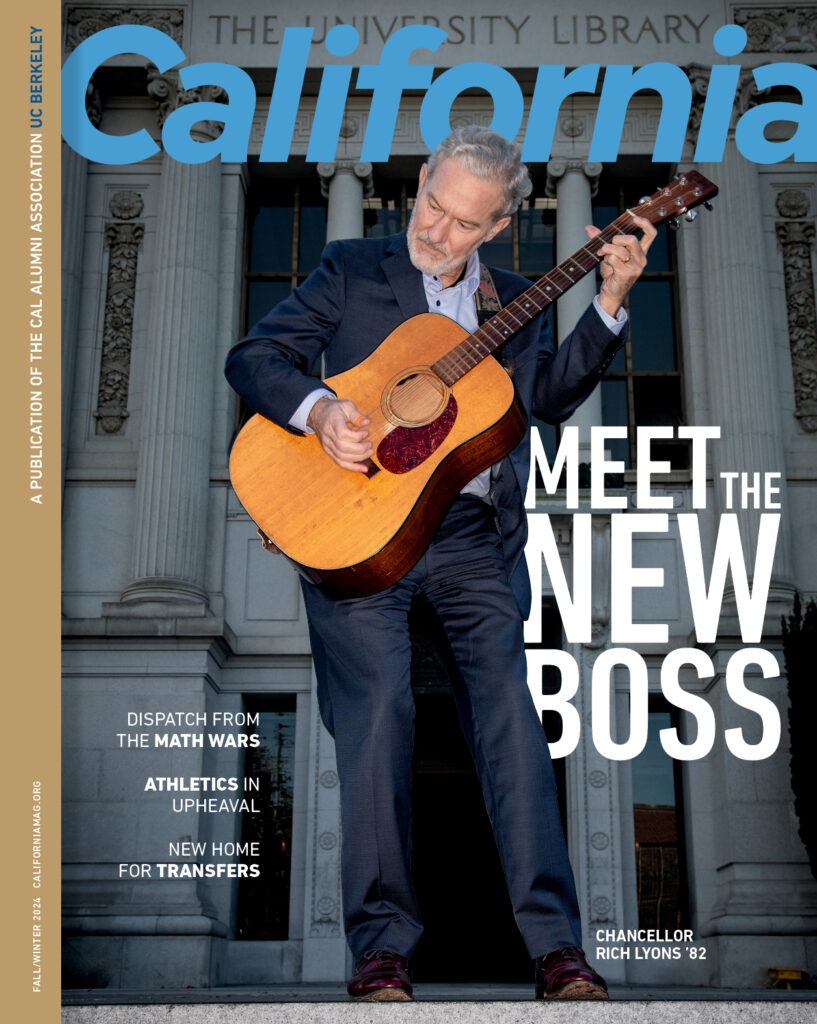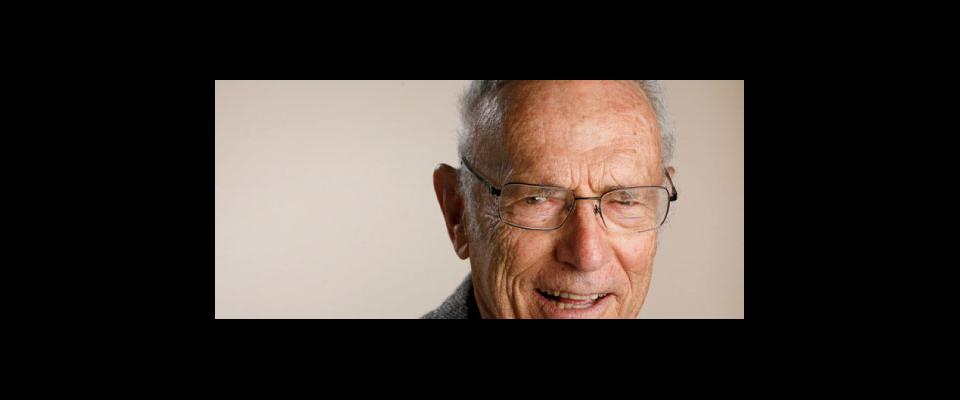Veteran science reporter David Perlman, the man who brought the Universe to the morning paper.
I sit down with the San Francisco Chronicle‘s David Perlman at a divey café in an alley just around the corner from the newsroom downtown. He says the food is terrible (he’s right), though he eats there most afternoons. He orders the same thing every day: smoked turkey on white. Perlman’s a man who knows what he wants, and when he’s found the right thing, he sticks with it. Being a newsman is all Perlman has ever wanted. As a kid he used to slip a piece of paper in his hatband and walk around interviewing people. He graduated from Columbia University in 1940 where he says he “majored in the school paper.” His first stint at the Chronicle ended with the attack on Pearl Harbor (young Perlman was sent to the roof that day to watch the skies for Japanese bombers). He joined the Army, then worked as a correspondent afterward, eventually wandering back to the Bay Area.
Then in 1957 he read Fred Hoyle’s The Nature of the Universe and got hooked on space. Before long he was writing about everything from gamma rays to the Mariner mission to photograph Mars.
Now 89 years old, Perlman lights up when he talks about science. “Exploring the solar system and exploring the cosmos,” he says, “looking for black holes at the center of the galaxy with Nobel Prize winners—how much more romantic can you get?” His favorite stories still come from astronomy, but he has also covered arms control, geology, and early hominids. He has traveled to the Galapagos twice, the first time filing dozens of stories, the second time reporting for the first time on life around deep sea vents (which he drolly calls “hot holes where stuff is coming out”).
I first encountered David Perlman in 2005 when he spoke to the Northern California Science Writers Association about the craft he helped invent. As he walked up to the podium, he was furiously scribbling something down. I later learned that between the courtyard and the podium, he had found and reported an entire story for the next day’s San Francisco Chronicle.
That tale might be exaggerated, but it says something about Perlman that people who know him don’t doubt it’s true. From the atomic age to the information age his byline (along with maybe Walter Sullivan at the New York Times) was the one newspaper readers most associated with science. Over the last half-century he has likely logged over 7,000 stories—alerting us to new species, a deep-ocean crust, or a spinning galaxy.
Colleague Susan Sward says, “He’s a tremendous force of nature. Not only a phenomenally kind man, but an endlessly curious one—about all aspects of life.” She’s worked with Perlman at the Chronicle for the past three decades, and “Every day he comes in and practically hurls himself at his computer—on the phone constantly, going out, getting on a plane to Africa. He has the energy level and the curiosity that a 30-year-old man could be envious of.”
In addition to producing a lot of stories, Perlman has also produced many writers, not least by lecturing on the subject at Berkeley’s Graduate School of Journalism. Science writing is a much different animal today than it was in 1951. Many reporters nowadays are former scientists, some with advanced degrees, yet they still come to study at the feet of “Dr. Perlman.” Kenneth Chang, science writer for the New York Times, was an intern under Perlman. “I had more fun working with David during those ten weeks than I had in the five years I was a grad student,” Chang says, “And I read more scientific papers as well.”
Richard Harris, NPR correspondent and former San Francisco Examiner reporter, says no one can work a press conference like Perlman, never trying to show off what he knows, always patiently letting scientists correct him. “I believe that any good reporter can write a really good science story if they are interested in it,” says Perlman, who reputedly still types with two fingers. “What is reporting? It’s asking questions. Sometimes the stupidest questions get the best information.”
If only it were that easy.
Scrolling through Perlman’s bylines shows even after half a century of hammering a daily beat his stories are still filled with wonder and amazement. Carl Nolte, who has worked with Perlman for 40 years, says there is a reason for this. “A lot of people have experience. Redwood trees have experience. But they don’t have his talent,” Nolte says. “You know what they say about newspapers: You are only as good as your last story. Well, his last story was this morning and it was terrific.”
As it turned out, he had two stories that day. Written by the quiet 89-year-old guy at the press conference—the one in the front row, with the brown sports jacket and ratty pad of paper.



















